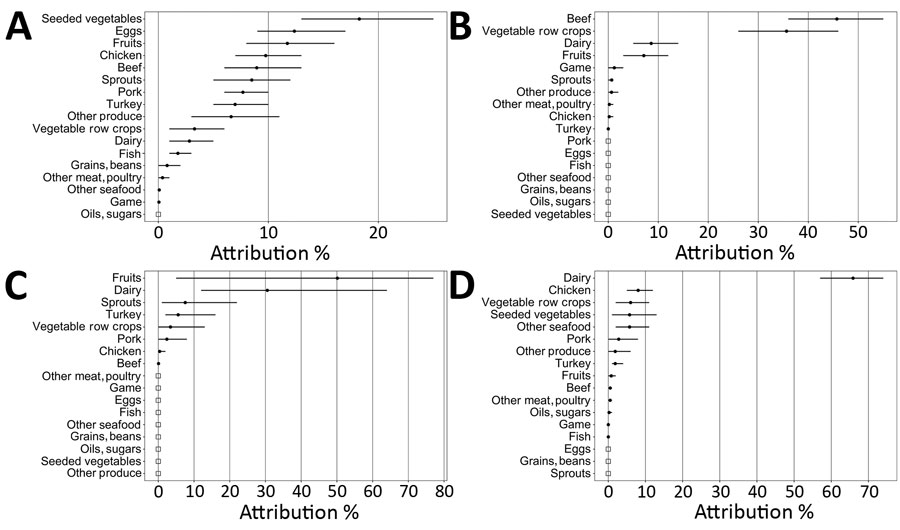Volume 27, Number 1—January 2021
Research
Recency-Weighted Statistical Modeling Approach to Attribute Illnesses Caused by 4 Pathogens to Food Sources Using Outbreak Data, United States
Figure 3

Figure 3. Estimated percentages of foodborne illnesses attributed to food categories and 90% credibility intervals (error bars) for Salmonella, Escherichia coli O157, Listeria monocytogenes, and Campylobacter, based on analysis of single-pathogen, single-food category outbreaks, Foodborne Disease Outbreak Surveillance System, United States, 1998–2012. Percentages are presented in descending order. Open squares indicate that no illnesses were attributed to that food category because no outbreaks were reported for that pathogen in that food category during the study period. Estimates calculated by using analysis of variance model–estimated outbreak illnesses for single pathogen, single food category outbreaks occurring during 1998–2012, with down-weighting of outbreaks that occurred during 1998–2007.
1Current affiliation: US Department of Agriculture, Fort Collins, Colorado, USA.
2Current affiliation: US Department of Defense, Bethesda, Maryland, USA.
3Current affiliation: US Department of Veterans Affairs, Palo Alto, California, USA.
4Retired.